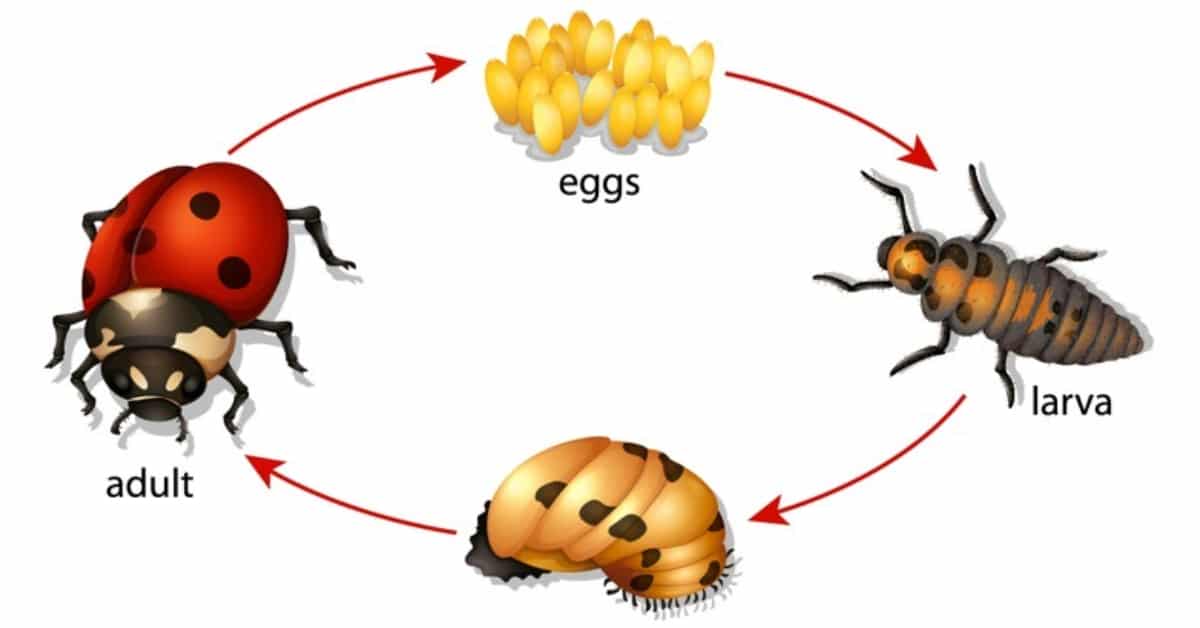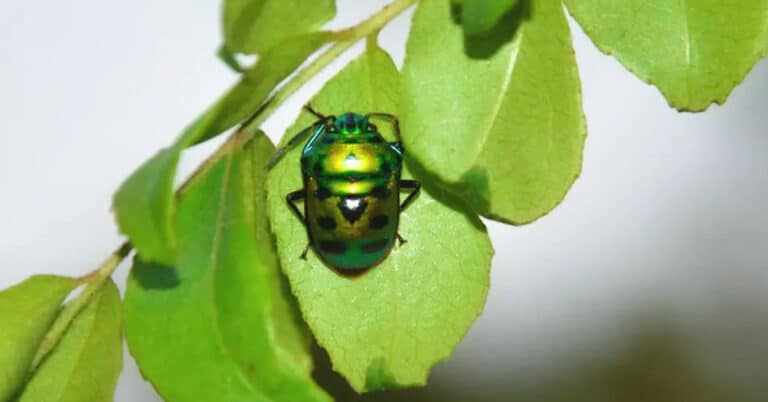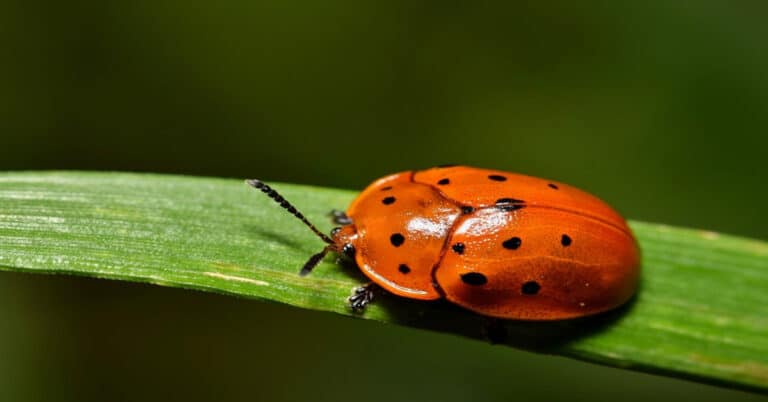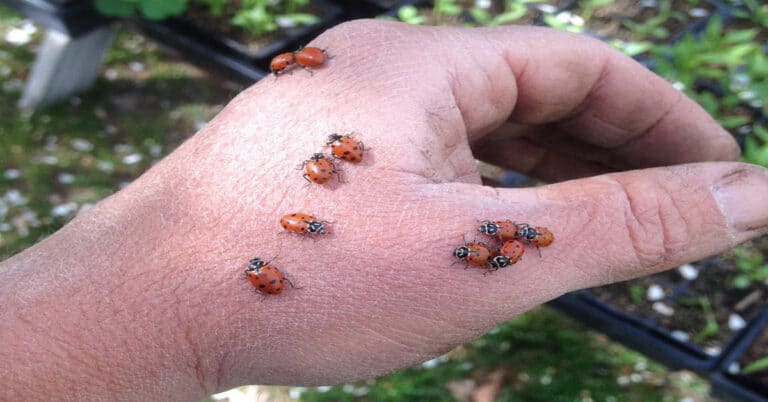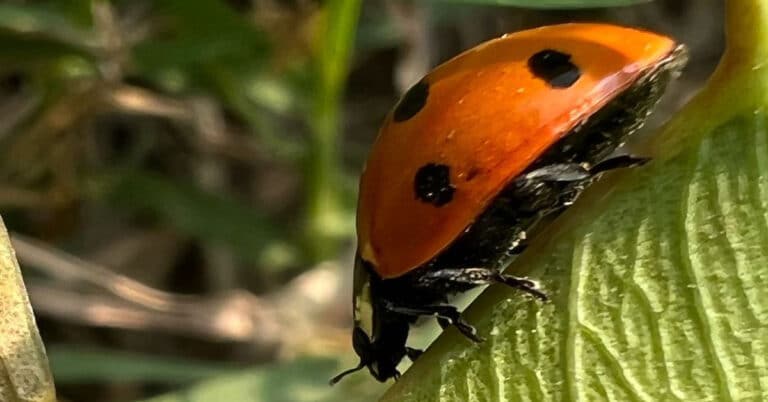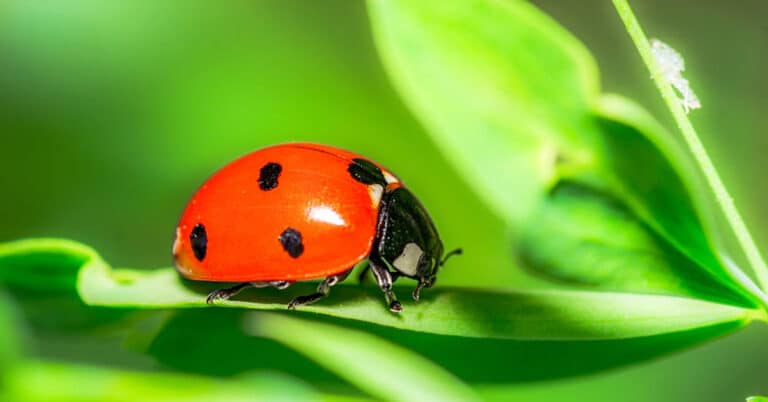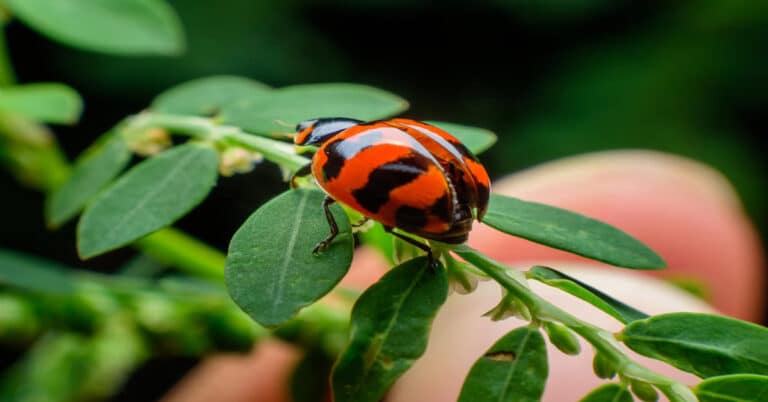Ladybug Life Cycle
The ladybug life cycle is not much different from the life cycle of a butterfly. The ladybug goes through the same four stages as a butterfly, the egg stage, the larvae stage, the pupa stage, and the adult ladybug stage. You know what adult ladybugs look like, but you wouldn’t even recognize them before they get to that final stage of their lives.
Egg Stage
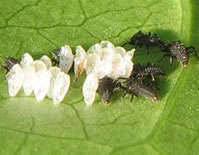
Female ladybugs lay their eggs on the underside of leaves. This is to protect them from being seen by flying predators as well as from the weather. A mother ladybug will lay from ten to fifteen eggs in one place and she will make sure that it is a place where the babies can find food when they hatch. The ladybug eggs look similar to yellow jellybeans, except that they are tiny. The next time you are in the park in springtime, carefully look under some plant leaves and see if you can pick out some ladybug eggs, but don’t touch them because you could kill the babies.
Larvae Stage
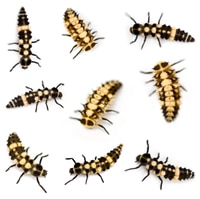
Once the eggs hatch, the larvae will come out and start looking for something to eat. They will look for tiny mites or aphids and they should find plenty because the mother found the perfect leaf to lay her eggs under because of the abundance of food for the larvae to find. Newborn larvae look sort of like tiny alligators. After only a few days, the larvae will be large enough to begin to molt (shed their skin), and they keep molting for as long as they are growing. You can find the molted skins on leaves if you look very hard.
Pupa Stage
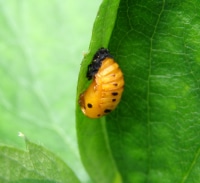
After a couple of weeks of growing, the larvae will start to change into something that looks like a shrimp. It will find a leaf to attach itself to and it will seem to fall asleep for a few days, but it is not sleeping at all. During the pupa stage, the larvae are going through a metamorphosis into a ladybug.
Adult Ladybug Stage
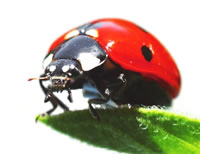
When the metamorphosis is complete, the skin of the larvae will split open and the full grown ladybug will emerge, but it still won’t look like the ladybug that you know so well. It will look soft and pink or very pale for a couple of hours until its shell becomes hard. As the shell hardens it also gains pigment, which causes the ladybug to become bright red.
Raising Ladybugs
Some people like raising ladybugs in ladybug farms similar to an ant farm or a worm farm. They do this because they love ladybugs and so that they can watch the wonderful transformation of the ladybug life cycle. Lots of teachers have ladybug farms. If your teacher doesn’t have one, you should ask him or her to get a ladybug farm for the classroom.
You can go here to see our frog life cycle coloring page and drawings.
Ladybug Life Cycle Index
- What Do Ladybugs Eat?
- Ladybug Classification/Types
- Ladybug Anatomy
- Why Do Ladybugs Have Spots?
- Ladybug Facts
- Ladybug Clip Art
- Ladybug Coloring Pages
- Ladybugs Pictures
- Unusual Ladybugs
- Ladybug Reproduction
- Science Fair Info
- Ladybug Infestations
- Fun Ladybug Crafts
- Ladybugs Helping Gardeners
You can also find out about the butterfly life cycle, dragonfly life cycle and frog life cycle and more information across Learn About Nature.

Having discovered a fondness for insects while pursuing her degree in Biology, Randi Jones was quite bugged to know that people usually dismissed these little creatures as “creepy-crawlies”.

